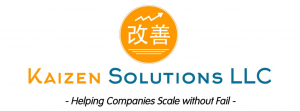Discover how to enhance decision-making in your organization by focusing on three crucial areas: solving the right problem, gathering all the available information, and understanding the intent. Learn to empower your team, foster a purpose-driven culture, and improve organizational clarity for better decision-making.

The Downfall of Boeing: A Lesson in Core Values
I recently watched “Downfall: The Case Against Boeing,” a documentary about Boeing’s 737 Max issues, which exposed the company’s sacrifice of safety for financial performance. Over 300 lives were lost due to Boeing’s negligence, as they calculated the odds of fatalities to be small enough to ignore while working on a solution. Even after the Lion Air and Ethiopian crashes, Boeing blamed the pilots and their training, resulting in a tarnished reputation that will take years to rebuild.
Boeing’s shift in focus from its core values of safety and engineering to prioritizing share price and financial performance was a grave mistake. The company went to great lengths to hide the MCAS system from pilots and regulators, avoiding additional certification requirements. The bold spirit of innovation, epitomized by Tex Johnson’s 707 barrel roll in 1955, seemed long gone. This misguided focus led to a drop in Boeing’s share price, while competitor Airbus’ share price experienced a 34% increase.
Boeing’s actions also damaged the FAA’s reputation worldwide, as countries no longer trust the FAA’s judgment. This loss of credibility is a heavy price to pay for prioritizing profit over core values. Companies must remember that profits result from upholding core values and good strategy and systems, and profits should not be the driving force behind the strategy.
The aftermath of the 737 MAX crashes revealed a concerning lack of accountability for top executives. When Dennis Muilenburg resigned as CEO and board director, he received $62.2m in stock and pension awards, highlighting the disparity in consequences for executives compared to others in the company.
In conclusion, Boeing’s downfall serves as a reminder of the importance of maintaining core values and prioritizing safety over short-term financial gains. A company’s reputation and long-term success depend on upholding these values and learning from past mistakes.
(c) Copyright 2022, Marc A. Borrelli
Recent Posts
Boosting Common Sense Decision-Making in Your Organization
Do You Understand Your Costs to Ensure Profitability?
You can only determine profitability when you know your costs. I’ve discussed before that you should price according to value, not hours. However, you still need to know your costs to understand the minimum pricing and how it is performing. Do you consider each jobs’ profitability when you price new jobs? Do you know what you should be charging to ensure you hit your profit targets? These discussions about a company’s profitability, and what measure drives profit, are critical for your organization.
Sunk Costs Are Just That, Sunk!
If you were starting your business today, what would you do differently? This thought-provoking question is a valuable exercise, especially when it brings up the idea of “sunk costs” and how they limit us. A sunk cost is a payment or investment that has already been made. Since it is unrecoverable no matter what, a sunk cost shouldn’t be factored into any future decisions. However, we’re all familiar with the sunk cost fallacy: behavior driven by a past expenditure that isn’t recoupable, regardless of future actions.
Do You REALLY Know Your Business Model?
Bringing clarity to your organization is a common theme on The Disruption! blog. Defining your business model is a worthwhile exercise for any leadership team. But how do you even begin to bring clarity into your operations? If you’re looking for a place to start, Josh Kaufman’s “Five Parts of Every Business” offers an excellent framework. Kaufman defines five parts of every business model that all flow into the next, breaking it down into Value Creation, Marketing, Sales, Value Delivery, and Finance.
Ideation! Harder Than It Sounds
Bringing in new ideas, thoughts, understanding, and logic is key as your organization faces the challenges of a changing environment. But when you do an ideation session in your organization… how does it go? For so many organizations, many times, after a few ideas have been thrown out and rejected, the thought process slows down very quickly, and a form of hopelessness takes over. How does your organization have better ideation? I’ve come across a new approach with a few teams lately.
Recruit, Recruit, Recruit!
An uptick in business has begun this quarter, and companies are rushing to hire to meet this surge in demand. What amazes me is how many are so unprepared to hire. Continual recruiting is key to the survival of a company. It isn’t the same thing as hiring—continuous recruiting is building a pipeline of people that you would hire if you needed to fill a position, or “A players” you would hire if they were available.
We All Need Clarity
If your organization is focused on obscurity over clarity, whether intentionally or not, your “A” player employees are vulnerable. There is a looming talent crunch. As we start to emerge from COVID, demand is increasing, and many are scrambling to fill positions to meet that demand. Headhunters and recruiters are soon going to be calling your key “A” employees. Have you been giving them a reason to stay?
Not Another **** Meeting
As Leonard Bernstein put it so well, “To achieve great things, two things are needed: a plan and not quite enough time.” Your meetings can be shorter, more fruitful, and engaging, with better outcomes for the organization, employees, and managers. It’s time to examine your meeting rhythms and how you set meeting agendas. This week, I break down daily, weekly, monthly, quarterly, annual, and individual meeting rhythms, with sample agendas for each.
Is Your Company Scalable?
Let’s start here: Why should your company be scalable at all? If your business is scalable, you have business freedom–freedom with time, money, and options. Many business leaders get stuck in the “owner’s trap”, where you need to do everything yourself. Sound familiar? If you want a scalable business that gives you freedom, you need to be intentional about what you sell, and how.
Are you ready for the Talent Crunch?
Companies are gearing up to hire. Unfortunately, many are competing within the same talent pool. Some experts are currently predicting a strong economic recovery starting in May or June. But as the economy booms, there is going to be fierce competition for talent. How will you fare in the looming talent crisis? Your organization should be creating a plan, now, so you can attract the talent you need in the year ahead.














